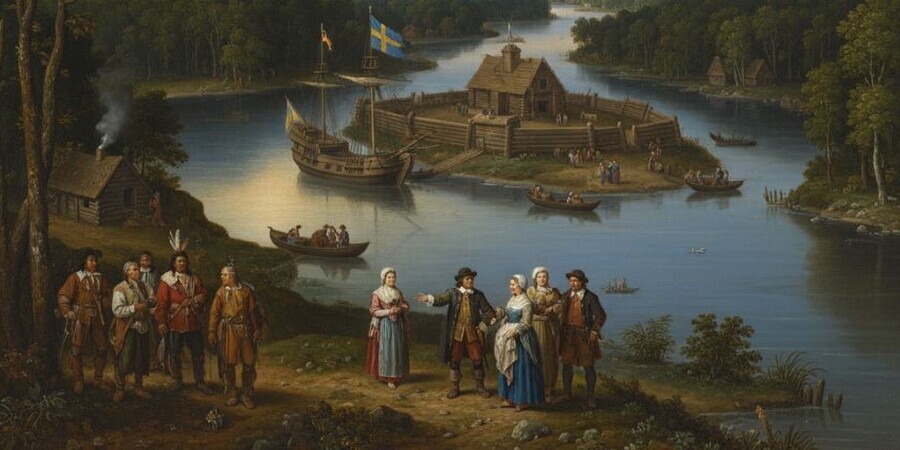DELAWARE - Delaware, often recognized as "The First State" for its pivotal role in ratifying the U.S. Constitution, boasts a rich colonial history that began not with the English, but with the Swedes. The first permanent European settlement in what would become Delaware was Fort Christina, established in 1638 by a pioneering expedition from Sweden. This small but significant outpost laid the foundation for the colony of New Sweden and marked the arrival of diverse European influences in the Mid-Atlantic.
Fort Christina: Delaware's Enduring First Permanent Settlement
The Swedish colonization effort was spearheaded by the New Sweden Company, backed by prominent figures including Chancellor Axel Oxenstierna and even King Gustavus Adolphus before his death. Their goal was to establish a trading post in North America, primarily for furs, and to expand Swedish influence.
In late 1637, two ships, the Kalmar Nyckel and the Fogel Grip, set sail from Sweden, carrying settlers, soldiers, and goods. The expedition was led by Peter Minuit, the former Director-General of New Netherland (who had famously "purchased" Manhattan Island), and a man uniquely experienced in colonial ventures in the region.
Arrival and Establishment of Fort Christina (1638)
In March 1638, the Swedish expedition reached the mouth of the Minquas Kill (now the Christina River) on the western bank of the Delaware River. Minuit recognized the strategic value of the location and, after negotiating a land purchase with the local Lenape (Delaware) Native Americans, began the construction of a fortified trading post. He named it Fort Christina in honor of Sweden's reigning monarch, Queen Christina.
The fort itself was a relatively small, earth-and-log structure designed to protect the settlers and their valuable trade goods. It quickly became the administrative and economic center of the nascent colony of New Sweden, serving as a hub for fur trading with the Lenape and cultivating crops.
A Period of Swedish and Dutch Rivalry
New Sweden's existence was marked by ongoing rivalry with the neighboring Dutch colony of New Netherland, which also claimed the Delaware Valley. Despite these tensions, Fort Christina and the surrounding Swedish and Finnish settlements managed to grow, introducing distinctive log cabin architecture, Lutheran religious traditions, and unique agricultural practices to the region.
However, the Dutch eventually asserted their dominance. In 1655, a large Dutch force led by Peter Stuyvesant conquered New Sweden, incorporating it into New Netherland. While Swedish rule ended, many of the settlers remained, leaving a lasting cultural legacy in the area. The English would later take control of New Netherland in 1664, eventually establishing their own colonial system over the former Swedish lands.
Legacy and Modern Significance
Fort Christina, though small in its initial form, represents a crucial chapter in Delaware's and America's colonial story. It was the first permanent European foothold in Delaware, predating English control and contributing a diverse cultural stratum to the region.
 Today, the site of Fort Christina is preserved as Fort Christina National Historic Landmark in Wilmington, Delaware. Visitors can explore a monument commemorating the landing, a replica of the Kalmar Nyckel, and learn about the Swedish and Finnish settlers who first brought their European culture to the banks of the Christina River, forever shaping the identity of the First State.
Today, the site of Fort Christina is preserved as Fort Christina National Historic Landmark in Wilmington, Delaware. Visitors can explore a monument commemorating the landing, a replica of the Kalmar Nyckel, and learn about the Swedish and Finnish settlers who first brought their European culture to the banks of the Christina River, forever shaping the identity of the First State.


